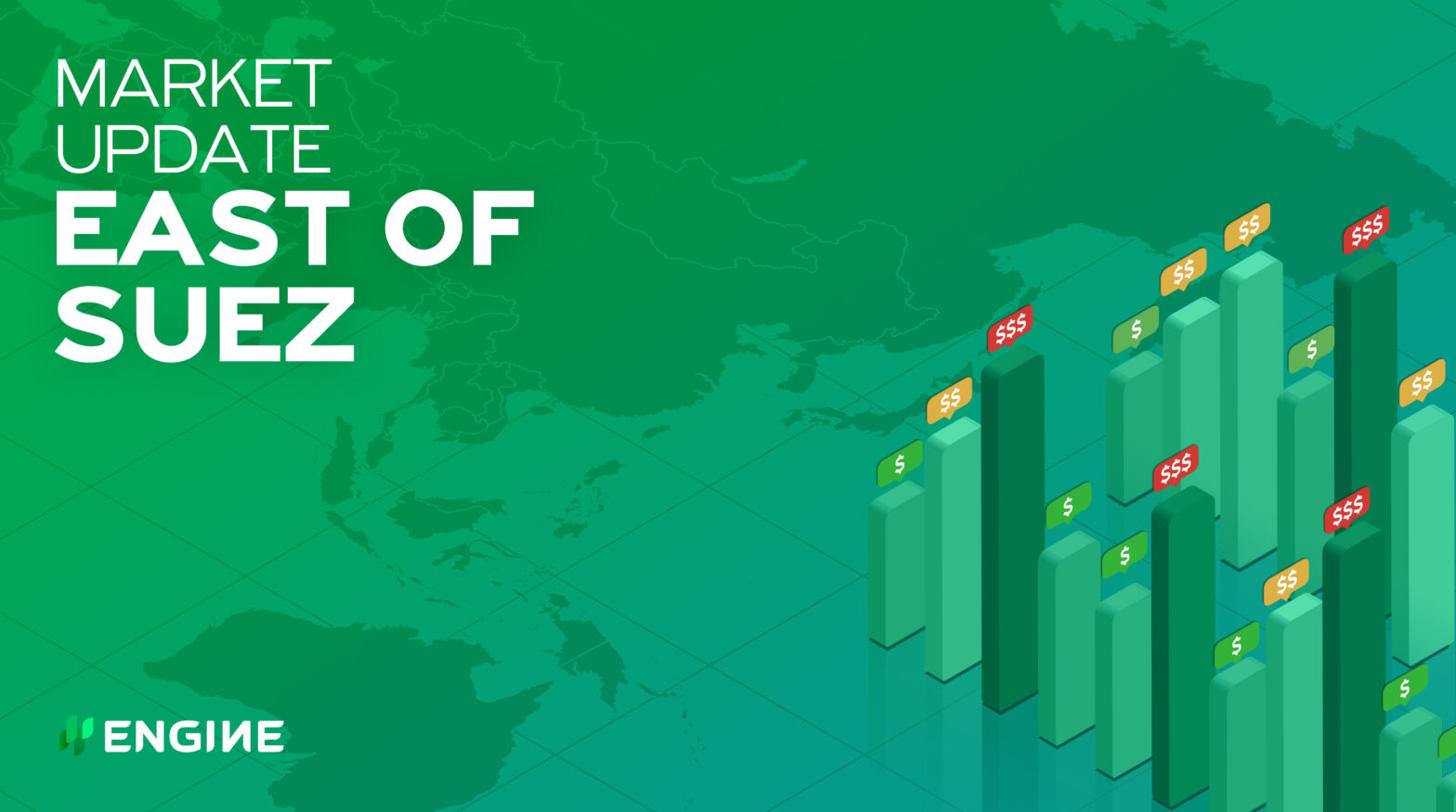East of Suez bunker prices have mostly come down with Brent, while Singapore’s LSMGO price has jumped amid higher-priced stems.
Changes on the day to 16.00 SGT (08.00 GMT) today:
VLSFO price down in Fujairah ($6/mt), Zhoushan ($3/mt) and Singapore ($1/mt)
LSMGO prices up in Singapore ($21/mt), and down in Zhoushan and Fujairah ($1/mt)
HSFO380 prices up in Singapore and Fujairah ($1/mt), and down in Zhoushan ($3/mt)
Singapore’s LSMGO price has increased today, despite Brent inching down. The price has been pushed up by two higher-priced stems: one for 0-50 mt and the other for 50-150 mt of LSMGO.
Lead times stand at 6-7 days for the fuel grade in Singapore, while fuel oils are tighter and require almost twice as long lead times to ensure timely supply.
Fujairah’s fuel oil stocks have dropped by just 0.6% on the week, to 7.70 million bbls on 26 October, data from the Fujairah Oil Industry Zone (FOIZ) and S&P Global Platts showed today.
Lead times are now longer for all three fuel grades in Fujairah. HSFO380 has the longest lead time in the UAE bunkering hub, at 14 days. VLSFO and LSMGO require a shorter 10 days, up from six days last week.
Brent
Front-month ICE Brent has fallen for a second day, shedding $0.39/bbl on the day to 08.00 GMT today, when it stood at $85.28/bbl.
US crude stocks gained 2.32 million bbls in the week to 22 October, indicative figures from the American Petroleum Institute (API) showed yesterday. That surpassed the 1.65 million-bbl build expected by analysts polled by Oilprice.com, and put downward pressure on Brent. US crude inventories have been growing for five straight weeks, according to the API.
Official US data from the Energy Information Administration (EIA) is set for release at 14.30 GMT today. A larger-than-expected build for these could weigh further on Brent.
Brent started the day trading above $86/bbl, and near multi-year highs, after Saudi Aramco yesterday warned of a larger oil supply deficit if Covid-19 concerns wither and more people fly again next year. Its chief executive Amin Nasser told Bloomberg that “spare capacity is shrinking”.
“It’s now getting to a situation where there’s limited supply — whatever is left that’s spare is declining rapidly.”
In its latest forecast, OPEC+ estimated that the global supply-demand balance will swing to a surplus from next year. The group has so far been unwilling to phase back oil supply cuts it made last year at a faster pace than 400,000 b/d per month, despite calls to pump more to curb the recent price rally.
